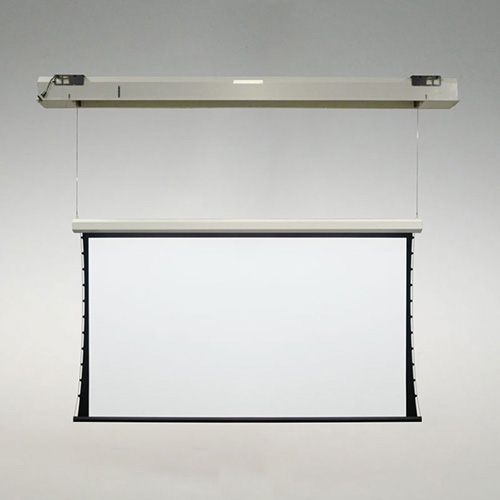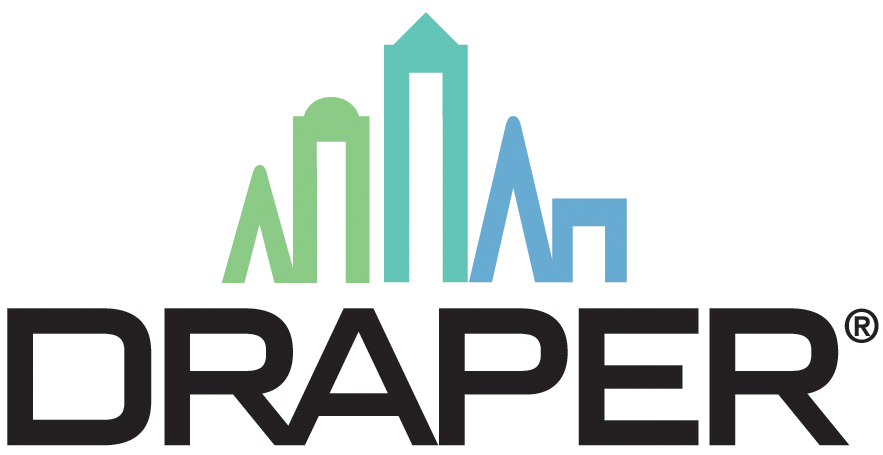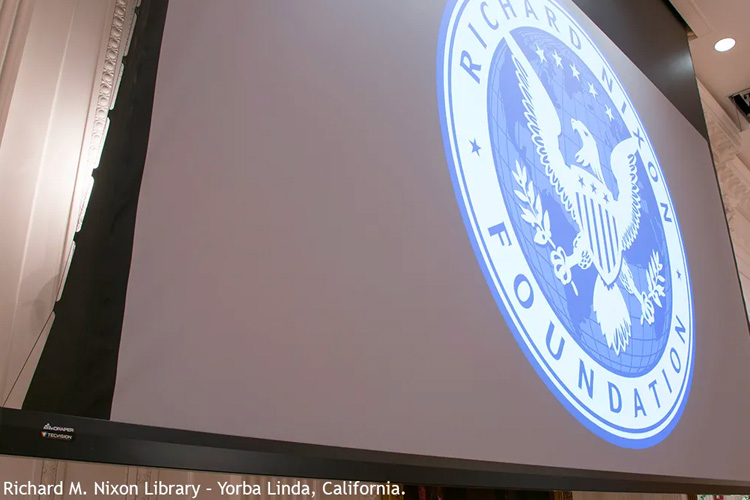5 Problems Solved By Modern Projection Screen Technology
December 13, 2021
Read the full original article here
Projection screen technology has been around for a long time. So long that it is easy to neglect projection in favor of the “new kid on the block” (relatively speaking at around 50 years old), flat panel displays. And while flat panels have advanced by leaps and bounds over the past few years, so have projection screens. Modern screen technology can be used successfully in more places than ever before. That includes places where flat panels still are not a good option.
Here are 5 problems that can be solved thanks to modern projection screen technology:
1. The disappearing image
We’ve all been there. You can’t see the image on the screen because it is washed out. Ambient light from the room or windows is competing with the projected light, making it seem like it is disappearing in front of your eyes. Ambient light rejection (ALR) screen technology addresses this by reflecting ambient light away from your eyes while simultaneously keeping the projected light focused back to you.
Draper® offers several ALR projection solutions in our TecVision® premium range of surfaces. Each has its own set of characteristics to meet the needs of different viewing environments.
2. The high ceiling
Have you ever had to “crane” your neck so you can see an image high overhead? The issue is caused by a high ceiling. People typically addressed this by adding extra fabric above the projection screen’s viewing surface. This creates a visual barrier and can cause flatness challenges. Another approach is to hang flat panels on long pole-type mounts.
The Ropewalker by Draper gets around this issue by lowering the entire screen—case and all—down from the ceiling. Then the projection surface is lowered. The screen case is supported in unobtrusive but strong cables. No visual barrier and no flatness issues! Its’s also the only way to place an image in front of a glass wall which you cannot do with a permanently attached flat panel or video wall!

3. The low output projector
Sometimes a projected image is too dim simply because the projector isn’t powerful enough. Draper solves this problem with higher gain viewing surfaces. A typical white screen has a gain of 1.0. Draper offers brighter alternative gains up to 1.8. Increasing screen gain can cause color issues (more on that later) but Draper uses exclusive proprietary formulations to retain color accuracy as well as good off axis performance.
4. The postage stamp
Nothing makes it harder to follow a presentation or learn than having an image at the front of the room that is too small for the space. Flat panel displays, especially direct view LED, have made big strides in this area. Still, when it comes to large images projection screens have the advantage when it comes to size and cost restrictions.
With Optically Seamless Technology, TecVision® surfaces are available in sizes as large as 67 feet wide, depending on the screen model. Screens larger than 12′ high may be fused with the Optically Seamless process. Draper warrants that the fusion will not be seen, with or without projection, from distances of five feet or more.

University of Texas Arlington, Dallas, Texas. Onyx projection screen. Dealer: Summit Integration Systems, Addison, Texas. Photographer: Scott Williams, Visual Impressions Inc. Dallas, Texas.
5. The off-color blues
As mentioned earlier, screen manufacturers can increase the gain of projection screens so that more light is reflected to the viewer. One way to do this is to add blue to the screen formulation. The blue makes the light appear brighter to the human eye. This has a downside, however: doing this means the screen isn’t accurately reflecting color.
But others’ downside is our bright side. Every TecVision surface is certified by the Imaging Science Federation (ISF) to be accurately reflecting color.
To learn more about our award-winning TecVision projection surfaces, click here.
@Draperinc #Draperinc #AVTweeps #AV
Company:  Draper, Inc.
Draper, Inc.
Product: AV Mounts and Structures
Of: Terry Coffey
Source: https://blog.draperinc.com/2021/12/5-problems-solved-by-modern-projection-screen-technology/
Tags:
Audio Visual
Offering the freedom to install seamless ALR screens up to 16 feet in height, Parallax Stratos is a Contrast Based ALR surface that rejects up to 80 percent of ambient light (March 27, 2019), Five incredibly smart, small, and simple AV ideas (November 19, 2018), How Ambient Light Rejection (ALR) works: clearing the confusion (March 21, 2018), Updated projection screen science (December 28, 2017), Fast-Fold NXT Screen System (November 16, 2017), Stagescreen Portable Projection Screen® (September 12, 2017), Creating the perfectly flat viewing surface (July 11, 2017), Video Surveillance In 2017: 4 Things You Need To Know (July 7, 2017), Striking the Right Color Balance in ALR Screens (April 10, 2017), Ventilation for you the music fan: Brilliant audio performance concealed behind your fan grille (February 27, 2017)


